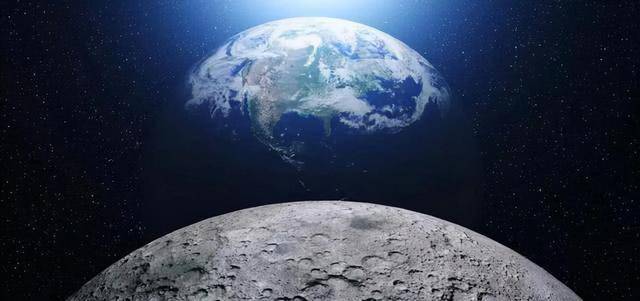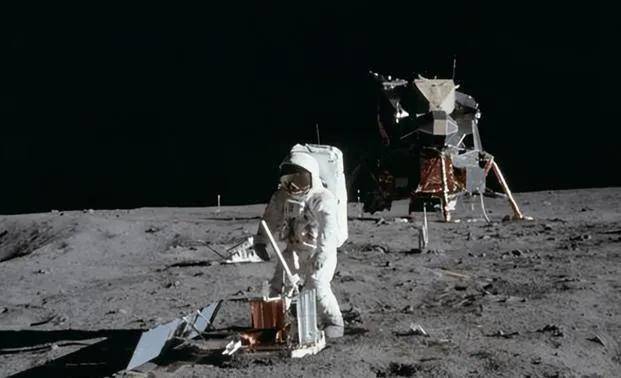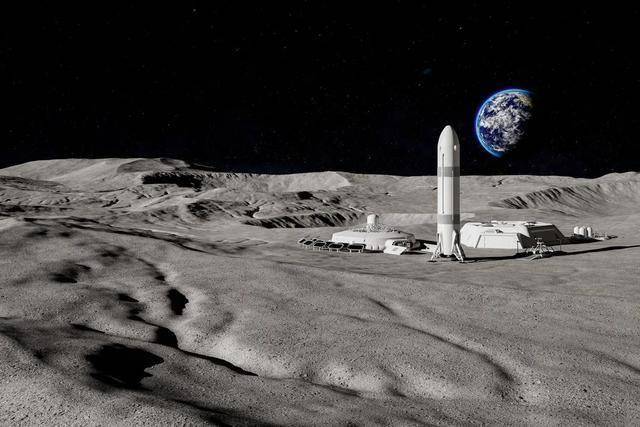On May 14th, according to the BBC, French tire manufacturer Michelin, Japanese Bridgestone, and American technology company Venturi Astrolab have recently announced their (更多…)
We are on Earth
-
Jupiter is getting smaller
Jupiter is crucial to the evolution of the solar system. According to existing theories, the formation of Jupiter 4.6 billion years ago and its strong gravitational field played a key role in determining the orbits of other solar system planets and the shape of the solar system’s gas and dust disks, as well as the distribution of stars and the formation of the main asteroid belt. (更多…)
-
Mysterious orbs emerge from the Milky Way, scientists: too perfect to exist
“Teleos” is a nearly perfect spherical bubble. But what exactly it is and why it looks like this remains a mystery. (更多…)
-
NASA’s Webb Telescope Reveals New Details and Unsolved Mysteries of Jupiter’s Aurora
NASA’s James Webb Space Telescope (JWST) has captured the latest details of auroras on Jupiter, the largest planet in the solar system. Compared to the auroras on Earth, the “aurora dance” on Jupiter is hundreds of times brighter. With the advanced sensitivity of the Webb telescope, astronomers have conducted in-depth research on this phenomenon to better understand Jupiter’s magnetosphere.
How are auroras formed?
Aurora is a luminous phenomenon produced by high-energy particles entering a planet’s atmosphere and colliding with gas molecules or atoms near magnetic poles. The auroras on Earth include the Northern Lights and Southern Lights, which are usually triggered by solar storms. The charged particles released by the sun impact the Earth’s upper atmosphere, causing gases to glow in colors such as red, green, and purple.
On Jupiter, not only is the volume of auroras enormous, but their energy is also hundreds of times higher than on Earth.
The ‘extra energy’ of Jupiter’s auroras comes from volcanic satellites
Unlike Earth, Jupiter’s auroras are not only influenced by the solar wind, but also by its own strong magnetic field. It captures charged particles in the surrounding space, including those from the solar wind and particles from its highly volcanic moon, Io. The particles from the volcanic eruption of Io escape the gravitational pull of the moon and enter the orbit around Jupiter, becoming one of the energy sources for auroras.
Jupiter’s strong magnetic field accelerates these charged particles, causing them to collide with the atmosphere at extremely high speeds, thereby exciting gas to emit light and form auroras.
New discovery: The rapid changes in auroras are surprising
Jonathan Nichols from the University of Leicester in the UK led this study.
This is simply a Christmas gift – stunning
We originally thought that the aurora could slowly change within a dozen minutes, but what we saw was that the entire aurora region was rapidly ‘jumping’ and ‘flickering’, even changing every second
The Nichols team also discovered some unexplainable observational phenomena.
What’s even more amazing is that we simultaneously used the Hubble Space Telescope to capture images in the ultraviolet band, but the brightest aurora captured by Webb did not have corresponding bright spots in the Hubble image
This is confusing. To make two telescopes see such a combination of brightness, it would require a large number of low-energy particles to collide with the atmosphere, which was previously thought impossible
The NASA Webb Space Telescope captured a stunning aurora scene on Jupiter. These infrared observations reveal unexpected activity in Jupiter’s atmosphere, challenging scientists’ original understanding of its magnetic field and particle interactions. Combined with the ultraviolet data from the Hubble Telescope, these results raise new questions about Jupiter’s extreme environment.
The research team plans to continue studying the differences between Hubble and Webb data and explore their implications for Jupiter’s atmosphere and space environment. They will also compare the data from NASA’s Juno spacecraft with Webb’s new observations to further investigate the cause of this mysterious strong light.
This research result has been published today in Nature Communications. -
The US government plans to cut NASA’s budget and shift its focus to moon landing and Mars
According to recent reports from foreign media such as The New York Times, the US government has proposed a plan to cut NASA’s budget by approximately $6 billion. At the same time, the plan will also introduce a $1 billion investment for Mars exploration projects.
According to reports, the US government’s new budget proposal shows that NASA’s future missions will almost exclusively focus on sending people to the moon and Mars. This means that NASA will reduce research funding for many projects such as space science and Earth observation, and shift its focus entirely towards these two goals.
According to the latest budget proposal from the US government, NASA will receive $18.8 billion in funding for the next fiscal year, a reduction of approximately 24% from the current $24.8 billion.
According to CNBC, NASA has released documents stating that it will allocate over $7 billion for lunar exploration and “introduce $1 billion in new investments for Mars focused projects.
The New York Times pointed out that this shift is also highly aligned with the vision of Elon Musk, the founder of SpaceX.
Although the budget draft does not specify the specific use of the $1 billion and does not disclose a timeline for human landing on Mars, it is widely believed that the relevant funds may be used to support SpaceX’s Mars project.
NASA stated in a statement, “This proposal aims to simultaneously advance lunar and Mars exploration while still prioritizing support for critical scientific and technological research
NASA also stated that the agency will need to “streamline” its workforce, information technology services, facility maintenance, and terminate multiple “unaffordable” missions, while reducing scientific missions for “financial responsibility”.
The space policy director of the American Planetary Society, Dreyer, pointed out that if the budget is passed, “this will be the largest single year budget cut NASA has ever faced in American history… The signal of this budget is that the United States will no longer lead the global space industry, and we will turn inward -
NASA turns the screams of dying stars into music
Recently, NASA has transformed mysterious signals from black holes and dying stars into a stunning cosmic symphony through innovative “data listenability” technology.
This achievement is based on observation data from the Chandra X-ray Observatory, James Webb Space Telescope, and Imaging X-ray Polarization Explorer (IXPE). Scientists have mapped astronomical data into musical notes, allowing humans to “listen” to the mysteries of the universe.
The three sound processing technologies released by NASA demonstrate different stages of black hole evolution.
The first melody originates from the Wolf Rayet star WR 124, a massive star located approximately 28000 light-years away from Earth, which is violently ejecting outer material and forming a dazzling nebula. Scientists converted X-ray data from its core region into high-frequency “whistling” sounds, which gradually evolved into an interweaving of flute, harp, and string instruments. WR 124 may ultimately end its life with a supernova explosion and collapse into a black hole.
The second audio work is from the binary star system SS 433, located 18000 light-years away. The X-ray fluctuations are transformed into undulating tones, and the background stars are presented in a crisp “droplet sound”.
The last piece of music is from the Centaurus A galaxy, located 12 million light-years away, where the supermassive black hole at its center is ejecting a massive stream of energy. The X-ray data is transformed into ethereal wind chime sound effects, while the visible light data is performed by string instruments. -
Ten universities in the United States are fiercely competing in the NASA Student Challenge for creative design of MR space headsets for lunar bases
NASA has always been committed to exploring the integration of MR technology into astronaut helmets, aiming to directly present various key information within the field of view of astronauts. To achieve this goal, NASA has adopted various methods, including internal independent research and development, external bidding projects, and actively organizing team competitions.
picture
At present, the highly anticipated “NASA Spacesuit User Interface Technologies for Students (NASA SUITS)” student competition is about to kick off, with the competition scheduled from May 18th to 22nd. At that time, student teams from ten universities including Northeastern University in the United States will gather at the Johnson Space Center in Houston for intense competition. They will explore and design a practical and effective MR system around NASA’s long-term lunar settlement development plan.
The core goal of the NASA SUITS Design Challenge is to invite college students from across the United States to unleash their creativity and design user interface solutions that meet the needs of future space missions. After layers of screening, 10 universities stood out and qualified for the on-site competition at the Johnson Space Center in Houston.
picture
During the competition, each participating team has ample space for independent design. They can freely choose suitable equipment based on their understanding and preferences to design the display scheme for their spacesuits. However, there is a mandatory requirement that head mounted displays must use perspective MR technology to ensure that astronauts can still perceive the actual environment around them clearly while obtaining virtual information. -
Saturn’s rings shine for billions of years, gas giants hide secrets, guess how it came about?
Saturn is the second largest planet in the solar system, only one size smaller than Jupiter. Its body is mainly composed of hydrogen and helium, accounting for more than 90%, with a little bit of other gases mixed in. Because it’s all gas, Saturn doesn’t have a hard surface like Earth, stepping on it feels like stepping on clouds, it’s completely untenable. This guy is so large that it can hold 760 Earths, no wonder it’s called a ‘gas giant planet’.
Saturn’s rings shine for billions of years, gas giants hide secrets, guess how it came about?
Saturn’s rings shine for billions of years, gas giants hide secrets, guess how it came about?
The core of Saturn is a hard object, mainly composed of ice, rock, and metal. These things come together to form Saturn’s’ heart ‘. As soon as the core is formed, the surrounding gases are attracted by its strong gravitational force, mainly hydrogen and helium. These gases wrap around the core, forming Saturn’s thick outer shell. Over time, Saturn grew into the behemoth we see today.
Saturn’s rings shine for billions of years, gas giants hide secrets, guess how it came about?
Saturn’s rings shine for billions of years, gas giants hide secrets, guess how it came about?
Where does Saturn’s energy come from? It doesn’t make a living by burning firewood. When the core is formed, it constantly contracts due to gravity, releasing a lot of heat. This heat makes the temperature inside Saturn frighteningly high. What’s even more impressive is that there are nuclear fusion reactions inside Saturn. Simply put, it means that hydrogen atoms are squeezed together to become helium atoms, releasing enormous energy. This process is a bit like solar power generation, but Saturn’s mass is not large enough, so the reaction is not as strong.
Saturn’s rings shine for billions of years, gas giants hide secrets, guess how it came about?
Saturn’s rings shine for billions of years, gas giants hide secrets, guess how it came about?
Speaking of Saturn’s atmosphere, it’s quite lively. Its surface often experiences storms blowing back and forth, rolling up clouds like a party in the sky. The most famous one is the “Arctic Storm” at Saturn’s North Pole, with wind speeds so fast that they can blow houses away. These storms make Saturn’s atmosphere colorful, looking like a painting.
Saturn’s rings shine for billions of years, gas giants hide secrets, guess how it came about?
Saturn’s rings shine for billions of years, gas giants hide secrets, guess how it came about?
Saturn’s rings are its most stylish signature. This ring is not made of stone or metal, but of countless small ice particles. These ice particles may have been left behind after the fragmentation of Saturn’s moons, or they could have been unused materials in the original planetary disk. They are pulled by Saturn’s gravity and orbit around Saturn, forming this sparkling ‘belt’.
Saturn’s rings shine for billions of years, gas giants hide secrets, guess how it came about?
Saturn’s rings shine for billions of years, gas giants hide secrets, guess how it came about?
Some people are worried that Saturn may explode, as it contains nuclear fusion reactions. Don’t panic, Saturn isn’t that easy to explode. Its quality and pressure are not high enough, the nuclear fusion reaction is very stable, and the released energy only keeps Saturn warm, without causing any major trouble. Scientists say that the possibility of Saturn exploding is almost zero, so we don’t have to worry about it. -
USA instructs NASA to develop universal time standards for the moon and other celestial bodies
According to SpaceNews on April 3rd, the White House Office of Science and Technology Policy (OSTP) has released a memorandum titled “Celestial Time Standardization Policy to Support the National Earth Moon Science and Technology Strategy,” directing NASA to develop a universal time standard for the Moon and other celestial bodies known as Coordinated Lunar Time (LTC) by the end of 2026. This measure aims to establish a global standardized association with the universal time standard Coordinated Universal Time (UTC) on Earth, ensuring the safety of data transmission between spacecraft and the synchronization of communication between satellites, bases, and astronauts in the Earth Moon space. This memorandum sets four main features: LTC traceability to UTC, ability to ensure precise positioning, navigation, and timing, autonomous recovery after loss of contact, and scalability of the Earth Moon space external environment.
-
Moon time standard-NASA establishes a lunar time system, using whose time?
This seemingly technical resolution has actually opened the most secretive curtain of competition in the space age. When human space activities break through the Earth’s orbit, the importance of the lunar time standard is becoming the cornerstone of space navigation in the new era, just like the compass of the maritime age.
On a scientific level, establishing a lunar time standard has significant practical implications that cannot be ignored. Due to the relativistic effect, the clock on the lunar surface is 56 microseconds faster than that on Earth every day. This small difference is enough to trigger a disaster in the aerospace field – a microsecond error can lead to a navigation deviation of 1.6 kilometers. With the intensification of lunar exploration activities in various countries, missions such as Chang’e-6 and the Artemis program are intertwined on the lunar surface, and the standardization of time standards can effectively avoid orbital collisions and communication misalignment.
However, the “Coordinated Lunar Time” plan promoted by the United States is essentially a competition for space discourse power. The time standards unilaterally established by NASA within the framework of the Artemis Agreement are similar to a replica of Greenwich Mean Time in the 19th century. But the contemporary space landscape has undergone fundamental changes: the international lunar research station led by China has gathered more than ten cooperating countries, Russia’s nuclear powered lunar rover program is steadily advancing, and the European Space Agency’s “Moonlight Program” is also building an autonomous navigation system. In this multipolar pattern, any unilateral standard is difficult to gain universal recognition.
The contradictions in US space policy have further weakened its credibility. While proposing to cancel the Mars sampling return and reduce the budget for lunar orbital stations, there is also a high-profile push for the construction of time standards, which exposes strategic impatience. Former NASA engineer John Logsden once pointed out that “space standards require a dual endorsement of technical expertise and sustained investment. ”When the manned lunar landing program is repeatedly delayed and the costly portal lunar station is facing shrinkage, the so-called time standard is more like a mirage.
There is always a subtle turning point in the possibility of international cooperation. NASA has repeatedly expressed its willingness to exchange orbital data with China privately, and the European Space Agency is also seeking to establish a compatible navigation architecture. But the Wolf Clause is like a tight spell, trapping this cooperation at the theoretical level. The essence of the technical standard dispute is the competition of system compatibility, just like the communication protocol in the 5G era, the ultimate winner is often an open and inclusive system. The progressive technology verification adopted by the Chang’e project and the sharing mechanism of the Magpie Bridge relay satellite are accumulating practical capital for future standard setting.
It is worth noting that commercial aerospace is reshaping standard setting rules. The SpaceX starship has the capability to land on the moon, and the Blue Origin Blue Moon lander has entered the testing phase. The “factual standards” formed by these commercial entities in frequency allocation, landing coordinate annotation, and other aspects may be more permeable than government agreements. The technological breakthroughs of Chinese private aerospace companies such as Blue Arrow Aerospace and Star Glory are also adding weight to the Eastern standard.
In this standard game, the real breaking point may lie in Einstein’s formula for general relativity. The essence of lunar time is a technical mapping of the differences in spacetime curvature, and its establishment must be based on accurate gravity field modeling. The gravity measurement on the far side of the moon completed by China’s Chang’e series and the asteroid clock experiment of Japan’s Hayabusa 2 are enriching the spatiotemporal reference database. When countries


